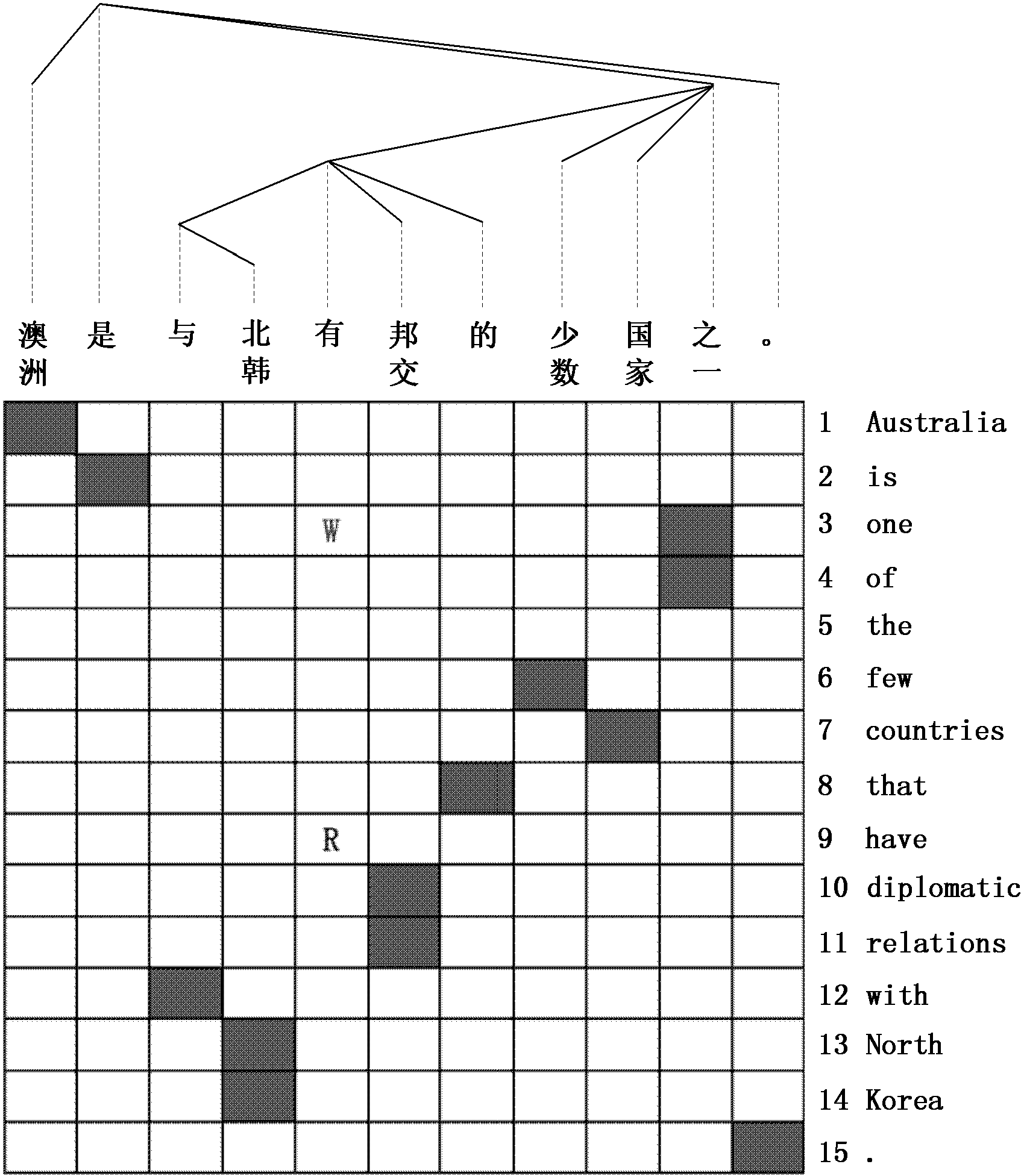Dependency coherence constraint-based automatic alignment method for bilingual words
An automatic alignment and word alignment technology, applied in special data processing applications, instruments, electrical digital data processing, etc., can solve the problem that the generative word alignment model does not incorporate syntactic information.
- Summary
- Abstract
- Description
- Claims
- Application Information
AI Technical Summary
Problems solved by technology
Method used
Image
Examples
Embodiment Construction
[0054] In order to make the object, technical solution and advantages of the present invention clearer, the present invention will be further described in detail below in conjunction with specific embodiments and with reference to the accompanying drawings.
[0055] The bilingual word alignment method based on dependency coherence constraint of the present invention generates a word alignment model according to a bilingual training set, and utilizes the word alignment model to perform word alignment on test sentence pairs. The bilingual training set includes a plurality of training sentence pairs, and each training sentence pair includes a source language sentence and a target language sentence corresponding to each other in semantics.
[0056]The basic idea of the present invention is to use dependency coherence to constrain the process of word alignment, so as to well control the range of each word being aligned to the other end, reduce redundancy, and improve word alignmen...
PUM
 Login to View More
Login to View More Abstract
Description
Claims
Application Information
 Login to View More
Login to View More - R&D
- Intellectual Property
- Life Sciences
- Materials
- Tech Scout
- Unparalleled Data Quality
- Higher Quality Content
- 60% Fewer Hallucinations
Browse by: Latest US Patents, China's latest patents, Technical Efficacy Thesaurus, Application Domain, Technology Topic, Popular Technical Reports.
© 2025 PatSnap. All rights reserved.Legal|Privacy policy|Modern Slavery Act Transparency Statement|Sitemap|About US| Contact US: help@patsnap.com



